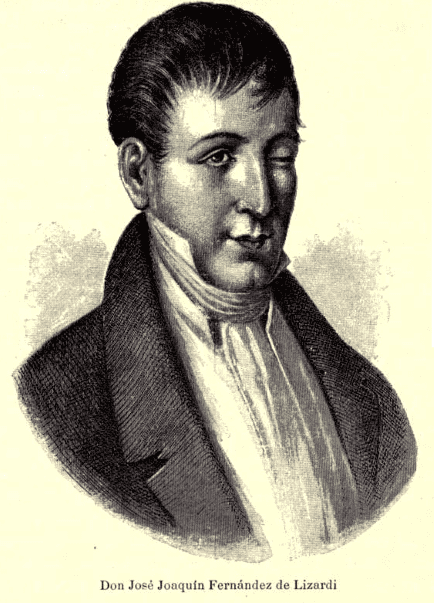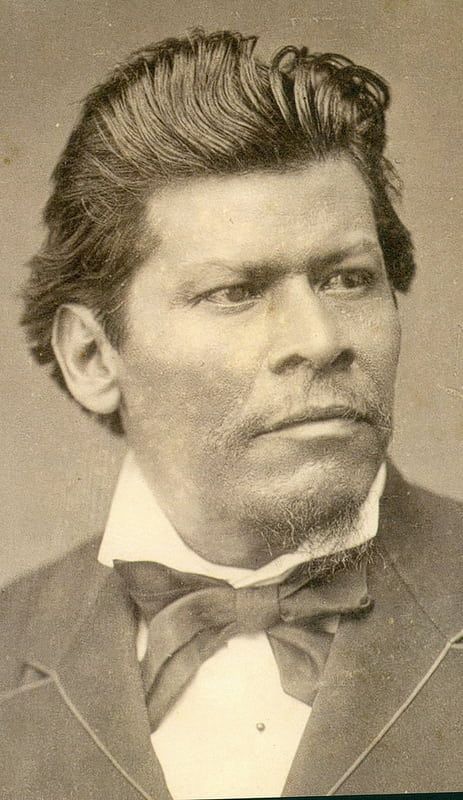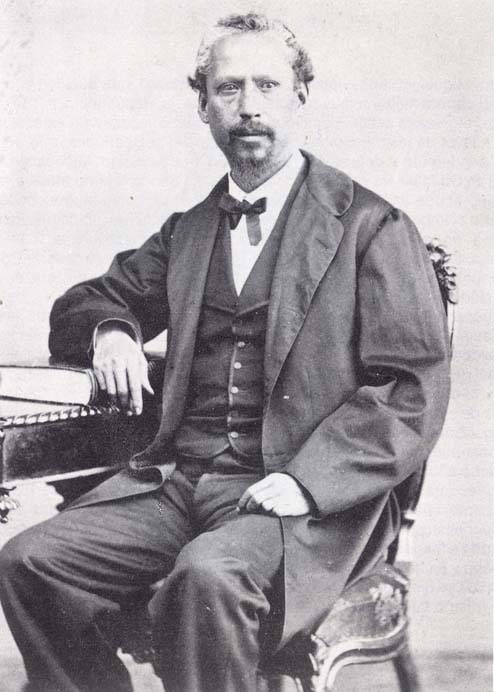A brief history of heroic journalism in Mexico
In this article, we will take a very brief look at the history of heroic journalism in Mexico to highlight an exemplary battle that we believe is not sufficiently known.

Indeed, in Mexico, there is a rich tradition of struggle in journalism. We could -leaving aside the viceregal gazettes- start with El Diario de México (1805-1816) with its founder Carlos María de Bustamante, who was persecuted for having joined the cause of Independence. In this regard, it is worth mentioning Juan Wenceslao Barquera, who, at one time, was the director of the said newspaper, and who carried out, in the famous newspaper, a great campaign in favor of the independence movement, which caused its great promoter serious losses.
Nevertheless, El Diario de México was a mixture of "poetry of circumstances and pious compositions" where, among others, the man who was a hero of the Independence, Don Andrés Quintana Roo -later an outstanding member of the Academy of Letran- wrote and saw published his first laudatory verses at the beginning and later with a burning patriotism. Carlos González de la Peña tells us: "The freedom of thought, recognized by the Constitution of Cadiz, provoked in Mexico an unexpected and passing expansion of journalism in 1812. The Diario de México greeted with joy the freedom of the press, the titular basis of political and civil liberty..." That would not last.
Likewise, the famous writer, journalist, and folklorist, Fernandez de Lizardi, had hard luck. In the last days of the viceregal power, already taken to the franchises granted by the fleeting Spanish Constitution of 1812, he launched his famous El Pensador Mexicano (The Mexican Thinker), which earned the talented writer a jail sentence for criticisms that hurt Viceroy Venegas. In his Pensador, as in his Periquillo sarniento, Mexico took notice of its cultural independence. The people and their picturesque speech reflected in the already classic Periquillo anticipated speeches, so malicious and so Mexican. Lizardi died in 1827 after a novelistic and very productive life.
From 1813 onwards, the liberating airs emanating from Hidalgo's movement caused multiple clandestine writings of a clear pro-independence tendency to emerge in the capital.
The first insurgent newspapers were El Despertador Americano, founded in Guadalajara, Jalisco, by Hidalgo and El Ilustrador Nacional created by the Zacatecan teacher Don José María Cos. In this regard, we take some curious data from the book by the teacher Carlos González Peña:
"He was a man of great talent, of fertile ingenuity in inventions -as Alamán says- and he proved it by his activity since he had to present himself before the Junta de Zitácuaro in November 1811. Without elements, without resources, he founded the second insurgent newspaper: El Ilustrador Nacional. To do so, he built the printing press, carving the type from rough pieces of wood and then using a mixture of indigo and oil as ink to print the first issues. That publication, improvised in the heat of the combats, was followed by another newspaper, already with a proper printing press, which was a conductor of opinion in the dramatic period in which it appeared: El Ilustrador Americano, in which he had Quintana Roo as a collaborator...".
As we can see, the figure of the priest Don José María Cos, the doctor in 1805 by the Royal University is that of a great journalist, "a firm and eloquent reasoner".

In 1821, El Indicador was written by Don José Luis Mora, a talented, objective, and well-considered writer. An enthusiastic liberal, he called for the diffusion of public education and absolute freedom of opinion. A notable historian and great Mexican, he died in Paris in 1850. He is the paradigm of the liberals, while Alamán will be the paradigm of the conservatives, and this dichotomy will mark the events of the entire 19th century.
Since 1836 and for 20 years in a row, the Academia de Letran has been in operation. Initiated by restless and talented young people, it would be the light that illuminated Mexican enlightenment in the first half of the 19th century. It was presided over by Andrés Quintana Roo and gave space to many ingenious people, among them Ignacio Ramírez -El Nigromante- and Ignacio Manuel Altamirano, great writer and renovator of the rarefied national environment.
Satirical newspapers flowed: El Zurriago, El Domingo, and others of equal fame that put in brine the careerist politicians, oligarchs in office, and unscrupulous military men who inked Mexican territory with blood. The skin of the journalists was not very safe. Tell it if not the following anecdote:
"Some works that appeared in El Siglo XIX annoyed the dictator in office. The author was Juan Bautista Morales, known as "El Gallo Pitagórico" (The Pythagorean Rooster). Santa Anna sent for him to reprimand him for the articles he wrote against the government. -Don't you know," he said, "that with just one word I can exterminate what is insolent in you! Don't you know that, if I wanted to, I could use every drop of your blood? Morales remained impassive and silent. Suddenly, very slowly articulating his sentences, he exclaimed resolutely: -"I have to continue writing as I have been doing until today and you must keep in mind that when I started this area I was convinced that the most I can stop are, as the people say "in four candles and a mat"?
We should add that Guillermo Prieto, the famous Fidel attributes El Siglo XIX a leading role in the revolution that overthrew Santa Anna in 1844, albeit for a short time.
José Luis Martínez has said in México en Busca de su Expresión that "Mexico's XIX century would not be what it was without the existence of two great newspapers: El Siglo XIX and El Monitor Republicano". The first and most important was founded in 1841, by Ignacio Cumplido, and the second in 1844, by Vicente García Torres, and both continued until 1896.
The 19th Century suffered interruptions from 1845 to 1848 during the San Luis Potosí revolt and the American invasion, from 1858 to 1861 due to the Reform War and from 1865 to 1867 during the French intervention and the Second Empire, and El Monitor Republicano from 1853 to 1855 due to the Santa Ana and from 1863 to 1867, also due to the Intervention and the Empire.
Both were friendly liberal organs and their owners suffered imprisonment and banishment because of their ideas and independence. The direction of Francisco Zarco, from 1855 until the death of the great journalist in 1869, led El Siglo to its best period. José Ma. del Castillo Velasco was the most conspicuous director of El Monitor. In its different eras, countless Mexican writers collaborated in the pages of both, and important literary works of social criticism or scientific studies were published in them..."
The scheme followed by these and other newspapers of the time was very different from the current one. News occupied a secondary place and reduced space since the information was rather dedicated to extensive chronicles of political events, parliamentary, foreign, and various digressions, which were alternated. Commercial, transport, and economic information was inserted and official documents were published. Commercial advertisements occupied very little space.

Often, poems, stories, historical and scientific studies, miscellaneous articles, and usual tables were published in a preferential place, and, almost regularly, in the lower part of the newspaper, in the folletón, books were published in installments, both by national and foreign authors. The two worthy newspapers survived, almost without variation, until the end of the century when both were defeated by modern industrial journalism, to which they did not know how to or could not adapt...".
There were various forms of coercion to intimidate these magnificent newspapers; in the time of Santa Anna (remember the anecdote with Juan Bautista Morales). His Serene Highness had the goodness to dictate a printing law that imposed penalties on writers for any fault and demanded large deposits of money from newspaper publishers. Thus, after a long, fruitful and distinguished performance, newspapers such as El Monitor Republicano, El Telégrafo and El Instructor ceased to appear, while the famous El Siglo XIX was fined heavily.
Ignacio Ramírez "El Nigromante" was also an outstanding journalist in the mid-nineteenth century. From Toluca, he published an important political newspaper called Temis y Deucalión in which he directly criticized the politics of Riva Palacio, governor, at that time, of the State of Mexico. He accused the latter of being moderate and lukewarm and encouraged the indigenous population to rebel against their oppressors. It is still remembered a famous article entitled A los indios, which was taken by the government as a provocation and earned him an accusation of sedition, slander and incitement to violence. The journalist and poet was brought to trial and brilliantly defended his cause but soon after, despite being exonerated of all charges, he had to leave the city of Toluca due to the strong pressures he was subjected to.
Within the framework of the Reform, the opposition was staged, journalistically speaking, by La Voz de México and El Pájaro Verde. The bitter polemics between El Siglo XIX and La Cruz are also remembered from those times.
Taking into account that liberalism was an eminently urban movement against a conservative majority of rural extraction, largely uneducated, one thinks with great emotion how difficult it must have been, at that time, to give life to newspapers such as El Monitor or El Siglo and questions arise: How many thousands of copies were published? How many citizens read them? There is no certainty in the answers, but we can affirm that their influence was long-lasting and that their census, in some way, persists. The statue of Zarco is testimony of a deed of minorities for majorities, if we take into account that out of the 8 million inhabitants of the country in those years, more than 6 million were illiterate.

The responsibility for the change was due, in part, to a handful of exceptionally prepared liberals of great culture. In spite of being a minority, a brilliant group stood out: Ponciano Arriaga (the Commission presided by him elaborated the draft of the Constitution, which was discussed and reformed during long sessions from June 16, 1856 to February 5, 1857), Santos Degollado, Valentín Gómez Farías, José María Mata, Melchor Ocampo, Ignacio Ramírez and our old acquaintance Francisco Zarco, protagonist and effective chronicler of the deliberations.
How to judge this legacy of the Reformation? In it we will see total and partial successes; in short, it is about pacifying and civilizing, repudiating military violence (the constant in our history), favoring immigration, preferably European, parvifundio, freedom of association and work, the most advanced farming methods, roads and railroads as a sign of union and progress and freedom of worship. Did these idealists achieve anything? José Luis Martínez is categorical in this respect when he says:
"It is undeniable that it was a government for the people, but not of the people and by the people". Hence, we infer, its lack of attachment to the integration of indigenous minorities, despite the desperate efforts of Ignacio Ramírez and Altamirano, among others. Nevertheless, when Mexico regained its republican status in 1867, it really reached its emancipation. It is already an individuality in the concert of nations. It is a new country.
In 1869 Altamirano founded a magazine of imperishable cultural resonances: El Renacimiento; in it, in a strange and beautiful camaraderie, Guillermo Prieto, Ignacio Ramírez, together with the conservatives Montes de Oca and Roa Bárcenas, and with them Payno, Riva Palacio, Justo Sierra and the ill-fated poet Manuel Acuña, among others, mingled their talents.
In these notes, Don Anselmo de la Portilla (1816-1879), Spanish founder of the newspaper La Iberia in 1867, must occupy a well-deserved place. The meticulous Gonzalez Peña mentions that in that newspaper, in the form of a bulletin, "his very celebrated" historical library was published, in which old, unpublished or very rare works of capital importance for national history appeared. De la Portilla cultivated poetry, novels, history and literary criticism. When he died, a proposal was presented to Congress declaring that he had deserved the good of Mexico. He was a distinguished intellectual who worked hard for the rapprochement between Mexico and Spain.
Thus, the Academia Mexicana de la Lengua was created in 1875. This event marks the importance of language as a bridge of union between two realities: Spain, on the one hand, and 16 American nations, on the other.
On July 19, 1872, the capital city was shaken at dawn. First an artillery salvo and then a cannon shot every quarter of an hour. The death of Juarez was announced at 11:30 of the previous night. Fuentes Mares in El Imperio y la Republica extracts a quote from El Siglo XIX: "Silence of bent flags, Mexico opened a compass in the secular contest. The political personality of Mr. Juarez belongs to history, whose severe burin will assign him the place that rightfully corresponds to him, being unquestionable that his memory will always live in Mexico, for being linked to two of the important epochs of our public life".
In 1895 Amado Nervo, the immortal poet from Nayarit, founded with Jesús E. Valenzuela the Revista Moderna, which followed in the footsteps of the previous El Renaissance; years before, with Carlos Díaz Dufoo, the great writer and journalist Manuel Gutiérrez Nájera -El Duque Job- founded Revista Azul, which completed a very happy third in national magazines. Gutiérrez Nájera is a brilliant writer, journalist and poet. During those years the brilliant and stormy poet Salvador Díaz Mirón, the "reformer of the lyric" José Juan Tablada and "the last poet of the modernist movement" Enrique González Martínez also stood out. López Velarde also contributed his genius to national poetry.
El Monitor Republicano had a distinguished contributor in Justo Sierra in his famous Conversaciones del Domingo (Sunday Conversations). In journalism, the "poet of the home" Juan de Dios Peza also stood out, with an extensive bibliography at the end of the last century.
In 1892, in El Diario del Hogar -Gios Peza's fiefdom- a brave journalist who had been in jail many times -more than 30- Filomeno Mata addressed his open letter without reply to the President of the Republic, pointing out the injustice of the imprisonment of Daniel Cabrera, director of El hijo del Ahuizote, insofar as there was tolerance for conservative journalistic activity.
In 1896 El Monitor Republicano, brave champion of so many events whose constant feature was freedom, ceased to appear, in the midst of Porfirian rule; Vicente García Torres, its director, said in his final note: "The gag imposed on the press exhausts my efforts, it suffocates me. Since the Liberal Party does not exist, there are only a few men who keep their political faith". During those years, El Siglo XIX also disappeared, led at that time by the polemic Francisco Bulnes, who unveiled many miseries of our history. Bulnes is a very contradictory character.
The implacable censorship also put other liberal newspapers in check. Thus, El Demócrata announced the imprisonment of its director and editor, Joaquín Clausell and Francisco R. Blanco.
In Samuel Kaplan's Luchamos contra la injusticia (We fight against injustice), the persecution by the United States and Canada of the Flores Magón brothers and some of their comrades is exposed in heartbreaking detail, both in El hijo del Ahuizote and later in Regeneración, Ricardo Flores Magón's polemic and noble articles appeared in favor of a new order of things, the seed of the Mexican Revolution. Magón died in a North American prison due to Porfirian instigation.
At the beginning of the century, modern journalism was born with the newspaper El Imparcial. Everything else had been blown away by the wind. What was left...? It is legitimate to ask: Would heroic journalism continue, someone will probably answer: With attitudes like Belisario Domínguez's, it will never die.
Source: Author: Adolfo Hernández Muñoz, Source: Correo del Maestro. No. 40, pages 21-39.




